- Home
- slideshows
- miscellaneous
- This $15 million water tank can simulate a Category 5 hurricane. It could reveal clues about how storms worsen over time.
This $15 million water tank can simulate a Category 5 hurricane. It could reveal clues about how storms worsen over time.
The hurricane simulations take place in an acrylic tank with a surface area of more than 4,200 square feet.

The machine consists of a wind tunnel that simulates a storm and a wave maker that mimics the open ocean.
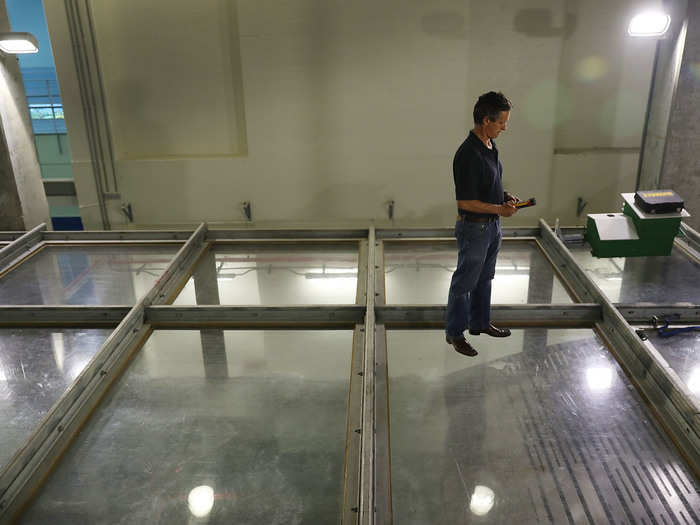
A hurricane simulation is essentially a study of how wind and waves interact, Haus said. Together, the wind tunnel and wave basin simulate random conditions that might prompt a storm.
The wave basin holds around 40,000 gallons of water, which get churned by 12 underwater paddles.
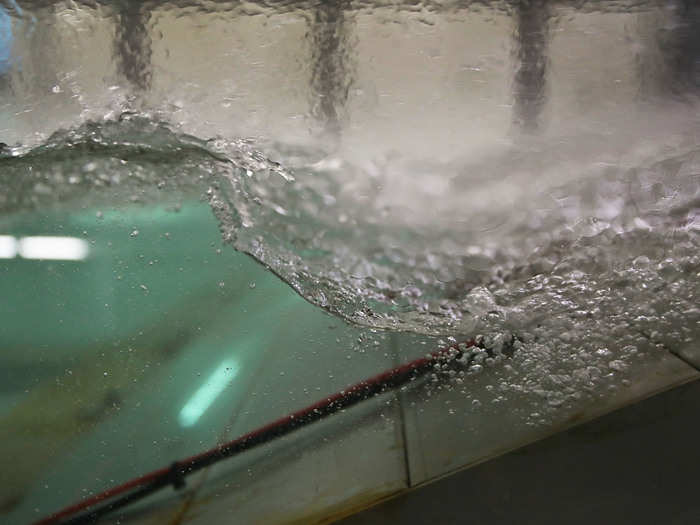
Determining how a hurricane interacts with land is "a tricky question," Haus said.
If waves crash against land in shallow water, he said, they might produce less friction, which could create a weaker hurricane. In deep ocean water, he said, there's nothing to obstruct the waves, so they may aggravate a storm.
The wind tunnel pulls in air from a giant fan with a 1,460-horsepower engine.
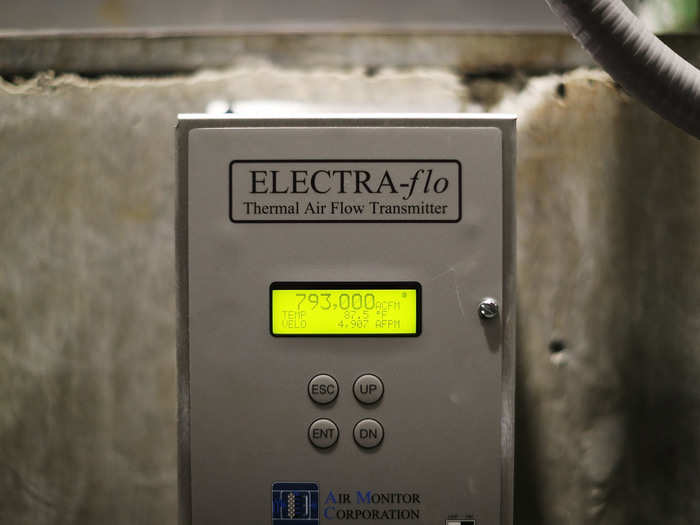
The air is spun around in chambers, then unleashed into the tank. Though the wind speed determines the category of a hurricane, Haus said people should focus less on categories and more on a hurricane's potential impact on an area.
"A Category 1 storm approaching a particular coastline in a particular way can produce really dangerous conditions and storm surges that aren't encapsulated by the simple wind speed," he said.
The turbines are noisy, so researchers are given headphones.
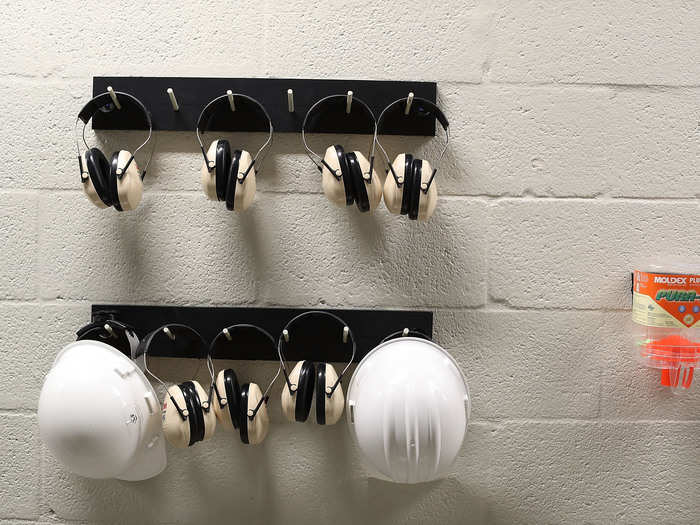
The glass tank allows researchers to observe firsthand how a hurricane takes shape while machines inside record measurements.
Remote sensors on top of the tank help monitor the hurricane like a satellite, and lasers on the bottom show what's happening beneath the water.
From there, researchers use computer models to determine patterns in hurricane behavior, from the direction of a storm to the way it builds.
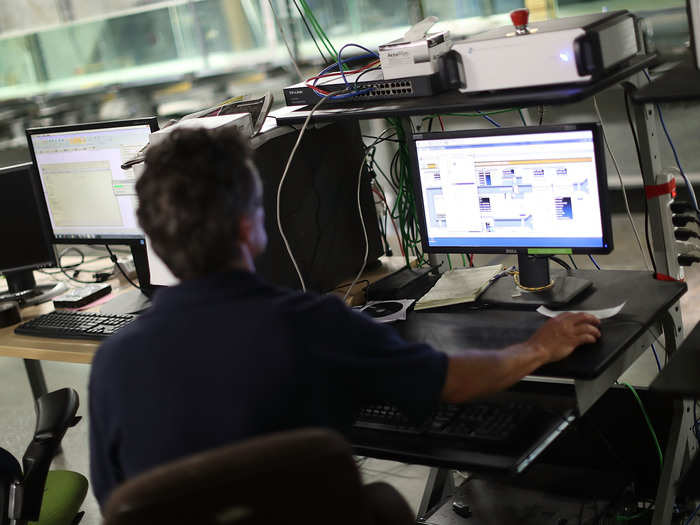
Haus said his research focuses on two basic questions: How do hurricanes form, and how do they intensify?
So his team examines conditions that might cause a hurricane to spin out, and works to determine how the rate of heat coming off the ocean powers a storm.
"If you get a better understanding of how heat transfers to the ocean in different wind conditions, then you can get a better projection of how much more intense a storm can be," Haus said.
Haus said climate change has generated a lot of "unresolved questions" for his lab.
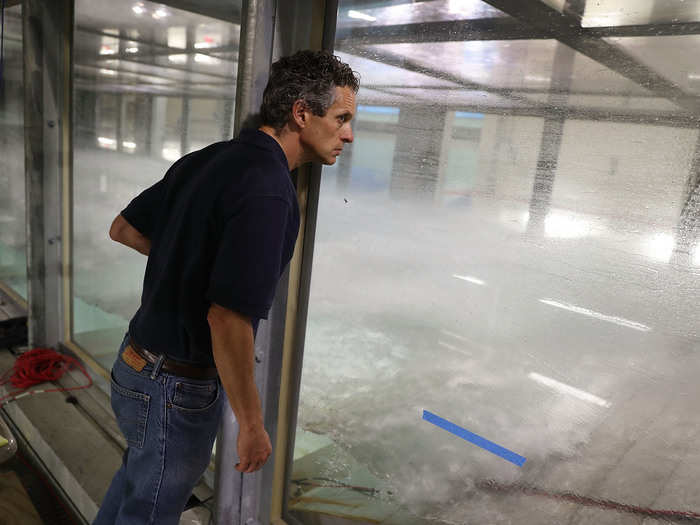
Climate change is causing ocean water to become warmer later in the hurricane season, which can intensify hurricanes.
"It's pretty well understood that if the water is warmer and it's causing more moist air to come up, then you have the potential for a storm to grow quickly and intensely," Haus said. "The question is how much that's going to happen."
He said "people might be surprised to know" that the technology used to measure hurricanes doesn't necessarily get better every year.
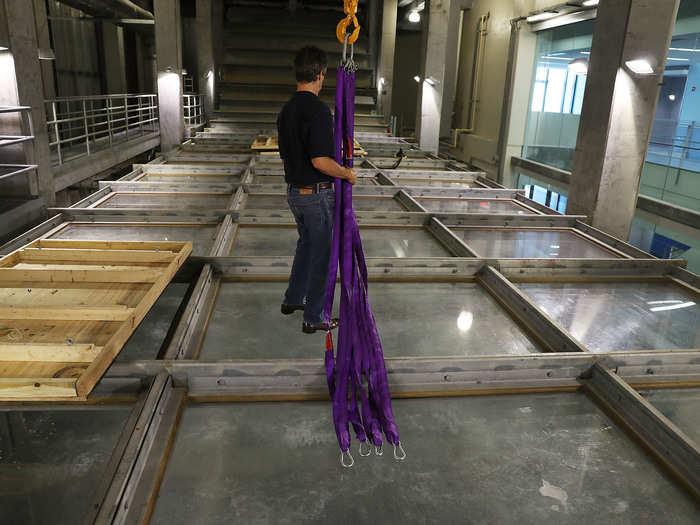
He said the US needs to continue to invest in satellites, remote sensors, and direct observations of the ocean to monitor and predict hurricane behavior.
He does not, however, support President Donald Trump's suggestion that the US drop nuclear bombs into hurricanes to modify their path or reduce their intensity.
"I've heard a lot of ideas put forth about how to disrupt a hurricane, but none as ludicrous nuking them," he said.
As for whether we'll ever be able to intervene to weaken a hurricane in other ways, Haus said such proposals often raise ethical problems. Decades ago, he said, the National Oceanic and Atmospheric Administration (NOAA) tried to experiment with ways to weaken or redirect hurricanes, but that came with major risks: "If that storm ended up hitting somebody, you were monkeying with that storm and you caused it to do that," Haus said.
Popular Right Now
Popular Keywords
Advertisement
